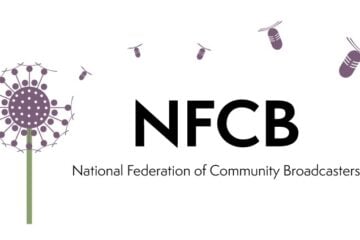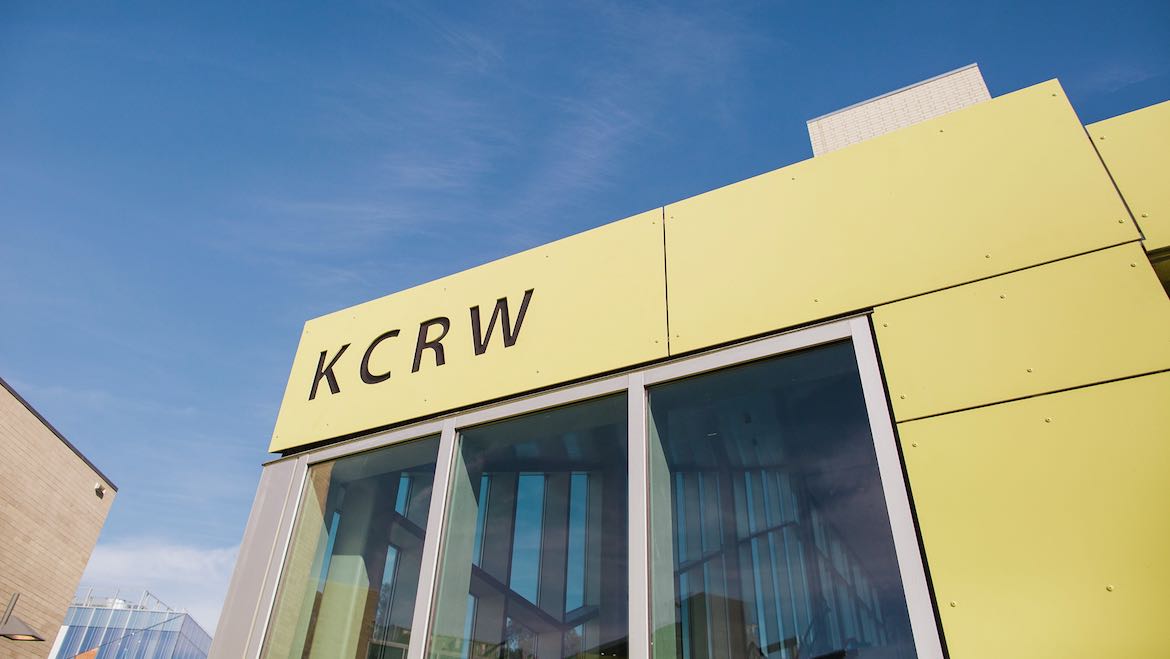Local talks and new national rules aim to end wasteful overlap of stations
From here on out, it will be a lot harder to volunteer a public broadcasting station into existence.
For a quarter-century, you mainly needed an FCC license that nobody else had snapped up yet, plus a minimal bankroll to show you had local support, and you could lay claim on a small share of CPB’s federal appropriation.
The ordeal of starting a station was itself a test of mettle, but the field had no self-imposed or government-imposed criteria to select licensees, or national plans for rational siting of stations for universal coverage of the population.
It may soon have such rules. Battered by claims that they are fat and wasteful, and facing the loss of some or all of their federal aid, pubcasters are pursuing cost-saving pacts with colleagues in Louisville, Denver and elsewhere. Last week, the public TV lobbying group, America’s Public Television Stations (APTS), urged CPB to give stations incentives to merge and collaborate in the name of efficiency. And this week, CPB-appointed task forces of station executives will resume talks on system policies, including criteria for rationing whatever federal aid remains.
The policy debate has gone on for years within public broadcasting under the heading of “birth control” — which stations will be born? But politicians lately have raised the volume and the urgency of the debate, now framed by some as “triage” — which stations will die?
Former Cabinet member Jack Kemp, now a senior fellow at the Heritage Foundation, suggested in the Wall Street Journal April 5 that public TV operates too many stations and could earn $2 billion by killing off extra stations and selling the channels.
The issue broke into public attention with help from CPB President Richard Carlson, who complained in a New York Times op-ed last April that New York metro-area viewers could tune in Barney & Friends 29 times a week or This Old House seven times a week.
With five transmitters serving parts of the tristate region, public TV was spending “too much money on bricks and mortar, and not enough on content,” Carlson wrote.
The column steamed a good many public TV executives, but Carlson had admirers, too. It was perhaps not the most tactful way to raise the issue, said Wayne Godwin, president of WCET in Cincinnati, but it was a good catalyst for discussing the topic in a field that has an “overabundance of independence.”
“These things need to be talked about,” Godwin told Current last year. “If we don’t discuss them and begin to move to our resolution of them, we run the risk of someone else imposing their resolution.”
Critics of “duplication” haven’t always acknowledged that many of the overlapping public TV stations have distinct schedules, despite some identical content; that repeating programs at convenient times is a genuine viewer service, despite its costs; and that some of the “stations” are actually unstaffed state-network transmitters (as in the case of the New Jersey and Connecticut networks) whose signals leak into adjoining states.
To some extent, the issue becomes a numbers game based on confusing station statistics.
Kemp is just the latest politician to point out that PBS is overequipped with 345 stations, compared with just 201 to 221 for each of the four commercial networks. And he can’t be blamed for thinking so, since PBS itself proudly announces that it is the largest TV network on the planet.
The 345 figure, however, is not entirely comparable and may exaggerate the size of the system and its bureaucracy. Though the stations do extend public TV signals to nearly all of the population, as Congress mandated, many public TV “stations” amount to unstaffed antennas. There are, in fact, 351 public TV transmitters, according to CPB, but only 179 licensee organizations, and the number of studios and staffs is probably closer to the lower number.
How many stations are there?
| Licensees | TV transmitters | Radio transmitters | |
| Joint TV/radio | 80 | 173 | 211 |
| TV only | 99 | 178 | — |
| Radio only | 280 | — | 418 |
| Total | 459 | 351 | 629 |
The figures, based on CPB data, were circulated recently by Jim Fellows, president of the Central Educational Network [and chairman of the Current Publishing Committee], but he’s not arguing that there aren’t some inefficient situations out there.
Fellows is devoting most of next week’s CEN annual meeting in Evanston, Ill., to a forum on productivity, including case studies of stations that are collaborating against inefficiency.
The Maine chance
The most dramatic decisions for productivity have carried a tragic air of sacrifice, with organizations volunteering to go out of business. Two radio licensees with three signals are merging in Louisville; a public TV station and a radio station hooked up in Anchorage; the public TV station in Seattle adopted the much weaker station in Yakima last year.
Richard Carlson suggested last year that the overlapping stations around New York “would do well to look to Maine.” There, both the state network and the college-licensed WCBB went out of business to create a new statewide nonprofit. Maine Public Broadcasting President Rob Gardiner is “quite surprised” how well the combination has turned out. Last weekend at the APTS annual meeting, he reported:
- Instead of two duplicative channels — which hurt public TV’s reputation — the network now has a distinct second channel, which is “really cheap and easy to do” once you’re operating a first channel.
- Maine viewers are getting 50 percent more local programming than the total produced by the two licensees before merger.
- The new handpicked board is far more “powerful and useful” than the old boards.
Elsewhere, other alliances are in the works. Indiana’s stations, mostly modest in size, are talking about collaborations. Three Louisiana licensees are realigning their services to bring educational programs to New Orleans, and Connecticut PTV is reportedly still talking with WNET about sharing some functions.
In Colorado, station execs and board members of three PTV stations met twice last week to feel out their views about some sort of joint operations. James Morgese of Denver’s mainstream station KRMA and Ted Krichels of the relative newcomer KBDI speculate that their stations and KTSC in Pueblo could combine forces to offer three distinct program services, at lower cost, instead of the three less distinct schedules they now broadcast separately.
Similarly, WKPC in Louisville, the statewide Kentucky ETV and WKYU in Bowling Green, Ky., are talking about collaborating on a two-channel service that would be available statewide, says John-Robert Curtin, president of WKPC.
The Kentucky collaboration could yield results as a “virtual network,” even if Curtin’s independent nonprofit, the state-operated network and the university-licensed WKYU don’t end up merging formally, Curtin says. He expects a plan will be announced “in the next month or two.”
And in New York State, managers from nine PTV stations will meet May 22-25 in Cooperstown for confidential talks. Michael Ziegler, president of WSKG in Binghamton, hopes to come out with a plan for collaboration or at least a consensus about the direction the stations should go.
Ziegler likes the idea of “public broadcasting service corporations” that would provide services to a number of stations, and has suggested that PBS, NPR and CPB could save money by creating one inside the Beltway, too.
Buying newscasts across town
In Philadelphia, the way to establish trust and begin cooperation between WHYY-FM and its smaller colleague WXPN-FM has been to develop narrow collaborations, one at a time, says WXPN General Manager Mark Fuerst.
His station is “very far along” in discussions about buying drivetime newscasts from WHYY, a news/talk station with a much bigger news department, Fuerst reports.
The two stations had done market research together, under a joint grant from a foundation, and made a three-way agreement with WRTI-FM to adopt separate program specialties: WHYY dropped most of its music; WXPN dropped All Things Considered; several jazz programs moved to WRTI, according to Fuerst. Now, WHYY and WXPN are brainstorming such ideas as joint underwriting sales and membership-card benefits.
The last thing that many nonprofit organizations would share is their fundraising effort, but two Ohio public radio stations combined theirs in the last three years and raised over $1 million together.
By moving toward completely unduplicated programming and a joint Twin Signals capital campaign, Antioch University’s WYSO in Yellow Springs and independent WDPR in nearby Dayton made clear that they were separate but complementary services, both deserving of support.
Before managers Brian Gibbons of WYSO and William Combs of WDPR began talks in 1991, the stations had shot down each others’ bids for federal equipment grants, and they knew they’d be going head-to-head for help from the same private donors in the area. Since they began cooperating, both have received equipment grants for fiscal 1993, Yellow Springs has renovated its quarters and gotten a power increase, and Dayton has built new downtown facilities and a repeater in Greenville.
The two managers realized in talks that their stations together were meeting only about 60 percent of the Miami Valley’s programming needs. “The bottom line was that both of our stations needed to improve drastically, and we found we could do it better working together than apart,” says William Combs. “Brian and I are absolutely convinced that we would be better off if our stations were merged in some fashion.”
Keep that second channel
In most cases, pubcasters want to continue putting out the separate signals even if two stations are merged physically and/or organizationally — and audience research backs up the value of two schedules.
In Tampa, a study by TRAC Media Services indicates that “two stations are better than one,” WEDU President Steve Rogers said at an APTS panel last weekend.
University-licensed WUSF is historically a weaker station than the main PBS outlet, WEDU, but the two stations plan their schedules to be noncompetitive. Just 9 percent watch only WUSF, so it doesn’t add much to the total number of viewers, but it does boost by 30 percent the “tonnage” of viewing time that people spend with public TV.
“It would be silly to give up second stations,” says TRAC Co-director David LeRoy, daring to disagree with Jack Kemp. Having a second channel in town is wasteful only if there is wasteful duplication of staffing, he contends.
In radio, airing the same programs at different times on two channels isn’t wasteful either, says radio audience researcher David Giovannoni, though it would be better to have three hours of All Things Considered on one station than 90 minutes each on two.
The real inefficiency, Giovannoni argues, is where public money sustains “boutique” programs and small stations with audiences of insignificant size.
If overbuilding of bricks, mortar and payroll is the problem, the prime example may be in the San Francisco Bay Area, where at least five public TV and six public radio stations are on the air.
And there you can see the forces that prevent consolidation: the organizational barriers that limit the choices of the college-owned KCSM in San Mateo, the racial politics that require independence for KMTP, and the histories of competition and conflict.
KCSM General Manager David Hosley has convened several meetings of the PTV chiefs, and tries to imagine what could start them talking about serious combinations.
The most vulnerable may be KRCB-FM/TV at the north end of the Bay Area, in the Santa Rosa suburb of Rohnert Park. The station has a staff of 11 for both TV and radio, and produces only about 20 hours of local programming in a year, according to President Nancy Dobbs.
The founders were originally rebuffed when they proposed that KQED, the area’s biggest station, collaborate with them in serving the northern area, Dobbs says. So they brought in CPB money and PBS programs and fired up their own station. Now, after 11 years on-air, joining up with a bigger station “would be regarded as giving up a voice in this community.”
Human factors are the ones that impede collaboration, as Combs and others attest. The clearest explanation for the difficulty, he says, is that every manager is paid to protect his or her own station. “That’s absolutely it. It’s simple, but it’s true.”
Indeed, mergers come easiest when the station managers are heading toward retirement. The heads of the Maine network and the Yakima stations retired soon after arranging the mergers.
Dealing with staff differences and qualms is the hard part, says Maine’s Gardiner. His staff now works in two locations, 100 miles apart, though combined quarters are planned. But the struggle with human nature, he believes, is preferable to slashing budgets or going off the air.






I have long been a watcher of PBS, not I admit a regular supporter. The BBC news was my weeknight MUST watch. I had hoped that the Fundraising & holidays, had been responsible for its no longer broadcasting as expected, 5:00 to 6:00pm every weeknight. Will it be back, in another time slot, if not, why has it been dropped?
Disillusioned, frustrated, saddened by another negative in this upcoming year.
Chantal